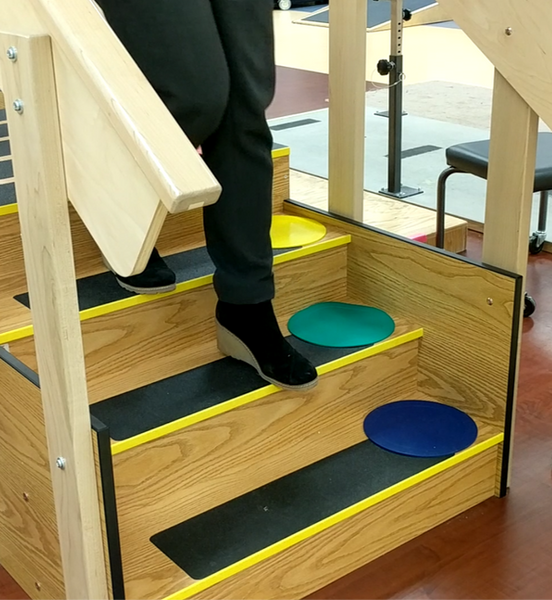ADL Balance Blog
4 Ways to Overload Balance Training
Based on principles of overloading, we know patients need to be challenged when exercising in order to make improvements. If exercises are too easy, there will be no positive training effects. Below is a list of 4 areas that can be manipulated to help overload balance exercises. Movement is arc of motion in which an […]
New Frontier in Balance Training: Upper Extremity Target Tasks
Balance is the ability to remain upright and steady in a given posture (standing, sitting, kneeling, etc.) without a significant reliance on postural strategies or arm support. Balance training has historically relied on unsteady surfaces, such as foam pads and rocker boards, to challenge balance. While these tools are effective in improving balance, they fall […]
3 Key Types of Standing Balance Exercises
By: Shane Haas, PT, MSIE, CPE Balance is the ability to remain steady on one’s feet without a significant reliance on postural strategies or external support. Postural strategies, also called balance strategies; include ankle, hip, reaching, stepping, and knee movements that adjust and counteract for disruptions in the body’s center of mass. Reliance on […]
How Patients Say Balance Exercises are Hard (Verbal and Non-Verbal)
We know, as therapists, that we need to challenge patients with exercises to help them get better. What we don’t know is exactly what the definition of “challenge” means when it comes to exercising balance. A recent study by Farlie et. al. (2015) looked at what patients say when training balance, and how these comments […]
3 Factors to Balance When Prescribing Balance Exercises
Prescribing exercises to improve balance can itself be a balancing act. Push too hard and your patient loses their balance too often and can feel insecure and discouraged with exercise. On the other hand, if you don’t push hard enough, your patient will not make significant improvements in steadiness and balance. Below are 3 points […]
- Previous
- Page 4 of 4
-
Next

